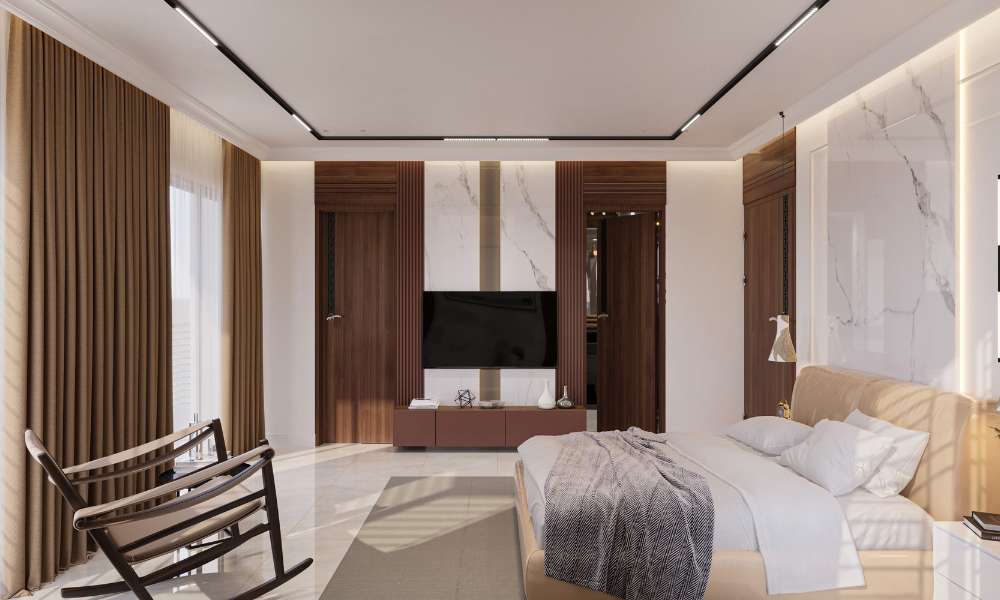Welcome to our comprehensive guide on how to soundproof a bedroom door, Where tranquility And a peaceful night’s sleep are just a few steps away. In a world filled with noise pollution from bustling streets, Noisy neighbors, Or even household activities, Having a soundproofed bedroom door can be a game-changer for your overall well-being And sleep quality.
A quiet And serene bedroom environment is essential for relaxation, Concentration, And maintaining a healthy sleep routine. Whether you’re a light sleeper who’s easily disturbed by external sounds or simply want to create a private oasis, Soundproofing your bedroom door is a practical And effective solution.
In this article, We will walk you through a range of do-it-yourself (DIY) Sound attenuation methods, As well as professional solutions, Ensuring you have the knowledge And tools to select the approach that best suits your needs And budget. Say goodbye to unwanted noise disruptions And hello to peaceful nights And productive days. Let’s get started on your journey to a quieter And more restful bedroom.
1. Understanding Sound Transmission
Soundproofing a bedroom door is a crucial step in creating a peaceful And private oasis within your home. To effectively soundproof your Entry, It’s essential to first understand the science behind sound transmission. Sound travels in waves, And these waves can penetrate through various materials And gaps, Making it essential to identify weak points in your Sound attenuation strategy. Whether it’s noise from outside traffic, A noisy neighbor, Or household activities, Recognizing how sound travels And where it can sneak in is key to achieving the desired level of quietness. In this article, We will delve into the fundamentals of sound waves, The importance of pinpointing weak spots, And the basic principles of soundproofing a bedroom door, So you can enjoy a peaceful And restful sleep environment.
2. Assessment And Preparation
Before embarking on your journey to soundproof your bedroom door effectively, It’s essential to begin with a comprehensive assessment And thorough preparation. Start by evaluating the current state of your bedroom Entry. Inspect it closely for any potential gaps, Cracks, Or weaknesses that may be allowing unwanted noise to seep through. These could include spaces around the door frame, Gaps between the Entry And the floor, Or even small cracks in the door itself. Identifying these weak points is crucial as it will help you determine the areas that need attention during the Sound attenuation process. Additionally, Gather all the necessary tools And materials for the project. This may include weatherstripping, Entry sweeps, Sound attenuation foam or panels, And any other soundproofing materials you plan to use. Adequate preparation ensures a smoother And more effective soundproofing process, Ultimately leading to a quieter And more peaceful bedroom environment.
3. DIY Soundproofing Methods
When it comes to DIY Sound attenuation methods for your bedroom door, There are several effective techniques to consider. First, Weatherstripping And door sweeps are excellent options to seal gaps And prevent sound from entering or escaping your room. Choose the right weatherstripping material for your specific Entry type And ensure a proper fit. Installation is typically straightforward, Involving the application of adhesive strips or nailing in place. Pay attention to details like corner seams And ensure a tight seal for optimal results.
Another useful option is adding a door seal kit. These kits work by creating an airtight seal around the perimeter of your Entry, Effectively blocking sound transmission. Installing a door seal kit involves attaching a track And seal to the Entry frame, Providing a tight seal when the door is closed.
For enhanced sound absorption, Consider using acoustic panels or curtains. When selecting acoustic materials, Opt for those with excellent sound-absorbing properties. Installation of panels or curtains usually involves attaching them to the door or surrounding walls, Creating a barrier that absorbs sound waves And reduces noise transfer.
If you’re looking for a more substantial soundproofing solution, Consider installing a solid core Entry. Solid core doors are heavier And denser, Providing better sound insulation compared to standard hollow doors. Replacing or reinforcing your existing door with a solid core option involves removing the old Entry And ensuring a secure fit for the new one. The benefits of a solid core Entry include enhanced noise reduction And a quieter bedroom environment. Choosing the right method or combination of methods will depend on your specific soundproofing needs And budget, But these DIY options offer effective ways to create a more peaceful And quiet bedroom space.
4. Professional Soundproofing Solutions
While DIY Sound attenuation methods can be effective for many homeowners, There are instances where professional Sound attenuation solutions are the best choice for achieving optimal results. Consulting with a professional Sound attenuation expert can provide valuable insights into your specific needs And the most appropriate solutions for your bedroom door. These experts have the knowledge And experience to assess your space comprehensively And recommend tailored soundproofing measures.
Professional soundproofing services often include advanced techniques And materials that may not be readily available or feasible for DIY projects. These services can range from installing acoustic panels And specialized Sound attenuation materials to even structural modifications if necessary. While professional soundproofing comes at a cost, It’s essential to consider the long-term benefits of a quieter And more peaceful living environment.
The costs associated with professional soundproofing can vary widely depending on the scope of the project, The materials used, And the expertise required. It’s advisable to obtain quotes from multiple Sound attenuation professionals to compare pricing And services offered. While it may require a higher initial investment, Professional Sound attenuation solutions can provide you with the ultimate peace And quiet you desire, Making it a worthwhile consideration for those seeking top-tier soundproofing results.
5. Maintaining Soundproofing Efforts
Once you’ve successfully soundproofed your bedroom door, It’s essential to implement a maintenance routine to ensure your efforts continue to provide the desired peace And quiet. Regular maintenance checks are crucial to identify any signs of wear And tear that may compromise the effectiveness of your Sound attenuation measures. Inspect weatherstripping, Entry sweeps, Or any other materials you’ve used for any damage or deterioration. Promptly address any issues you discover to maintain the integrity of your soundproofing.
Addressing wear And tear not only helps preserve the soundproofing benefits but also extends the lifespan of your door And its components. Regularly cleaning And maintaining the door And its seals can go a long way in preventing noise leaks. Additionally, Periodically reevaluating your Sound attenuation efforts And making necessary adjustments can help you adapt to any changes in your living situation or soundproofing needs.
By implementing these maintenance practices, You can ensure that your bedroom remains a peaceful sanctuary for years to come, Providing you with the tranquility And comfort you desire for a restful night’s sleep or a quiet space for work And relaxation.
6. Additional Tips for a Peaceful Bedroom
Achieving a truly peaceful bedroom goes beyond soundproofing the door, And here are some additional tips to enhance your tranquility. Consider investing in noise-canceling technology like white noise machines or noise-canceling headphones to further block out unwanted sounds. Arrange your bedroom furniture strategically to promote sound absorption – plush rugs, Curtains, And upholstered furniture can all help reduce sound reverberation.
When it comes to bedroom decor, Opt for soft materials And textiles such as curtains, Carpets, And bedding. These absorb sound And create a more serene atmosphere. If noise remains an issue, Especially if you live in a noisy urban environment, Don’t hesitate to explore soundproofing the walls And windows as well. These additional steps can work in harmony with your soundproofed door to create a truly peaceful haven where you can unwind, Relax, And enjoy a good night’s sleep, Free from disruptions.
Conclusion
Soundproofing your bedroom door is a valuable investment in creating a serene And peaceful living environment. Understanding the basics of sound transmission, Assessing the condition of your Entry, And exploring DIY methods like weatherstripping, Entry sweeps, Door seal kits, Acoustic panels, And solid core doors can significantly improve your bedroom’s Sound attenuation capabilities. For those seeking the utmost in soundproofing performance, Consulting with professionals And considering their expertise And services is a prudent choice, Albeit at a higher cost.
However, The journey to a quiet And tranquil bedroom doesn’t end with soundproofing the door alone. Regular maintenance checks, Addressing wear And tear, And making necessary adjustments are essential for long-lasting soundproofing benefits. Additionally, Implementing complementary strategies such as noise-canceling technology, Furniture arrangement for sound absorption, And the use of soft materials And textiles in your decor can further enhance your bedroom’s serenity.





